Wednesday, 02 December 2020
Performance Achievements of the 2015 East Kalimantan RPJMD
Samarinda, Monday 12/21/2015. The development of East Kalimantan in the last 20 years since 2005 is based on the Plan  Long Term Development (RPJPD) 2005-2025, has targets in each period. In 2013, as the end of the second period of the RPJMD (2009-2013), three important things were achieved, including:
Long Term Development (RPJPD) 2005-2025, has targets in each period. In 2013, as the end of the second period of the RPJMD (2009-2013), three important things were achieved, including:
1. Strengthening the quality of human resources;
2. Stabilization of an economy based on agro-industry and agribusiness;
3. Improved structure in balancing upstream and downstream products, both in order to increase added value and optimize the use of natural resources.
The next targets that have been set to be achieved in the 3rd period of the RPJMD (2013-2018) can be summarized into five main things that are integrated, including:
1. Improving the quality of human resources;
2. Improvement of government governance;
3. Increasing the role of renewable natural resources in the economy;
4. Equal distribution of infrastructure based on regional areas;
5. Improving the quality of the environment.
Setting the targets above must in fact take into consideration the local, national and even global socio-political and environmental issues and dynamics faced in initiating the 2013-2018 East Kalimantan RPJMD. The issues and changes in question are the increasing scarcity of non-renewable natural resources, for at least the last five years they have become the main pillar of the province's Gross Regional Domestic Product (GRDP), efforts to accelerate the development of 3T (outermost, frontier and underdeveloped) regions after the formation of the new province of North Kalimantan (Kaltara) which took 5 (five) regencies/cities of East Kalimantan in the north, plans to designate 5 (five) provinces in Kalimantan as energy centers within the framework of the Master Plan for the Acceleration of Indonesian Economic Development (MP3EI), and global demands to reduce carbon emissions, especially from the land-based development sector which results in deforestation and forest degradation. All of this became input for the preparation of the Vision and Mission of the 2013-2018 East Kalimantan Province RPJMD.
In an effort to achieve the East Kalimantan development target in accordance with the 2013-2018 East Kalimantan Province RPJMD, the East Kalimantan Provincial Government, in this case the East Kalimantan Province Bappeda, conducted an evaluation of the 2nd year of RPJMD implementation with a team from Mulawarman University Samarinda.
The evaluation of regional development achievements/performance in this case is based on the East Kalimantan RPJMD 2013-2018 Year 2 (2015) is basically a series of plans that are carried out regularly every year (carried out at the end of the fiscal year).
In principle, methodological evaluation still refers to the achievement of priority indicators (Key Performance Indicators/IKU) and outcomes indicators for each activity program planned in the 2013-2018 altim RPJMD. The achievement figures are based on input from the Regional Work Units (SKPD), which are also stated in the achievements of the SKPD Strategic Plan (Renstra) and Work Plan (Renja) as well as considering the achievements of budget use in the Regional Development Work Plan (RKPD).
The purpose of carrying out the evaluation of the 2nd Year of the East Kalimantan RPJMD (2015) is to get an overview of the categories of achievements/successes and at the same time the process that must be followed in development in order to realize the Vision and Mission of the Governor/Deputy Governor of East Kalimantan for the 2013-2018 period that has been determined.
The legal basis for evaluation of regional development achievements/performance in this case is based on the 2013-2018 East Kalimantan RPJMD Year 2 (2015), including:
1. Law no. 25 of 2004, concerning Development Planning Systems;
2. Government Regulation No. 8 of 2008, concerning Stages of Procedures for Preparing Control and Evaluation of the Implementation of Regional Development Plans;
3. Minister of Home Affairs Regulation no. 54 of 2010, concerning Implementation of Government Regulation no. 8 of 2008;
4. Minister of Home Affairs Regulation No, 27 of 2014, concerning Control and Evaluation of Regional Development Plans;
5. Regional Regulation Number 7 of 2014 concerning the Regional Medium Term Development Plan (RPJMD) of East Kalimantan Province for 2013-2018;
6. East Kalimantan Province Regional Work Unit Budget Implementation Document (DPA-SKPD) Number 1.06.01.38.01.5.2 dated December 1 2014.
The objectives of the second year evaluation of the 2013-2018 East Kalimantan RPJMD are:
1. Evaluating the achievement of targets and targets (according to impact indicators and outcomes indicators);
2. Analyze supporting and inhibiting factors according to the dynamics that develop in achieving targets;
3. Formulate recommendations as input to refine and rationalize targets or processes in achieving the 2013-2018 East Kalimantan RPJMD targets for the following years.
Target of 2013-2018 East Kalimantan RPJMD
The 2013-2018 East Kalimantan RPJMD targets are 19 targets in accordance with the mandate written in Regional Regulation Number 7 of 2014 concerning the East Kalimantan Province RPJMD to support the achievement of the vision and mission of Advanced Kaltim 2018. The results of achieving the East Kalimantan development target in 2015 are 84.21% have met the target, 10.53% are towards target and 5.62% have not reached the target and 23.53% have not reached the target.
Of the 19 development targets in the 2013-2018 East Kalimantan RPJMD, 17 development targets have reached the target, 1 target is currently on track towards the target, while 1 target is still experiencing obstacles.
This was revealed when the evaluation team from Mulawarman University Samarinda presented the team's evaluation results at the Working Meeting of the Governor of East Kalimantan with the Regents/Mayors of East Kalimantan, all SKPDs within the East Kalimantan Provincial Government, SKPDs of Regency/City Governments throughout East Kalimantan, vertical agencies in East Kalimantan in the Lamin Etam meeting room of the East Kalimantan Governor's Office, Samarida Friday, 12/18/2015.
For targets that have not been achieved, it is necessary to identify inhibiting factors and the efforts needed to accelerate their achievement. Meanwhile, for targets that have reached the target, it is necessary to look at the supporting factors so that it can be a lesson for targets that have not yet reached the target.
Public Relations of Bappeda Kaltim/Sukandar, S.Sos
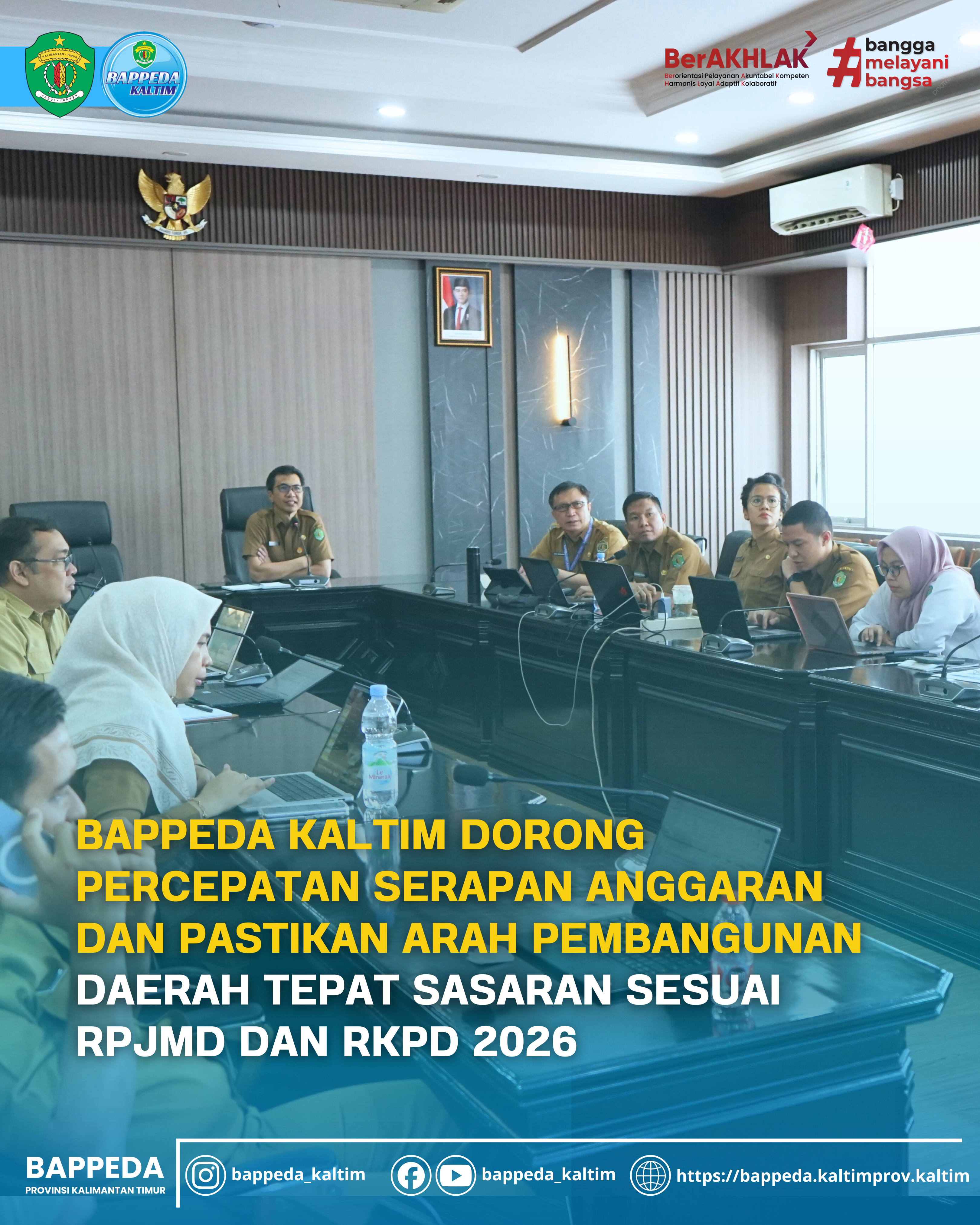
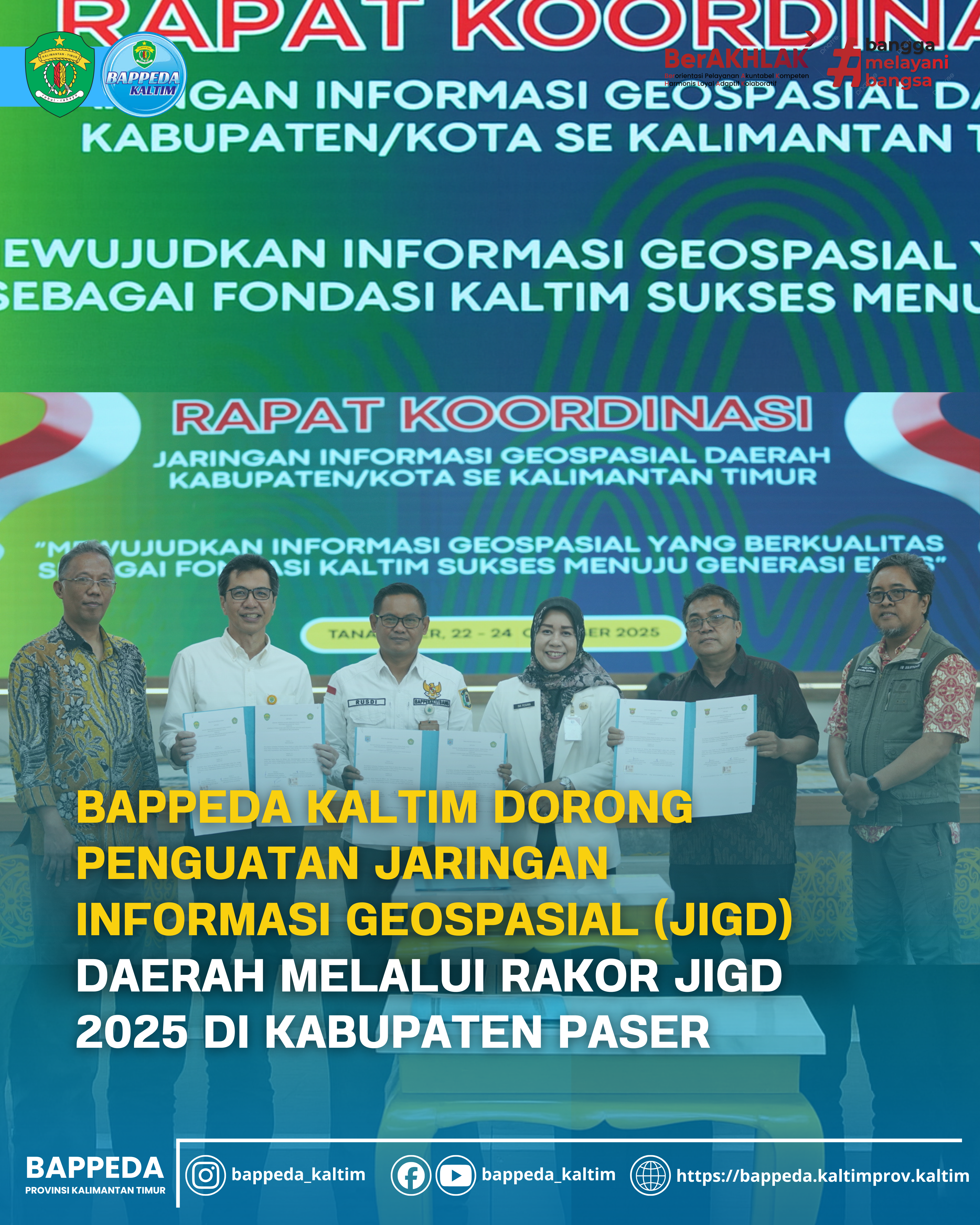


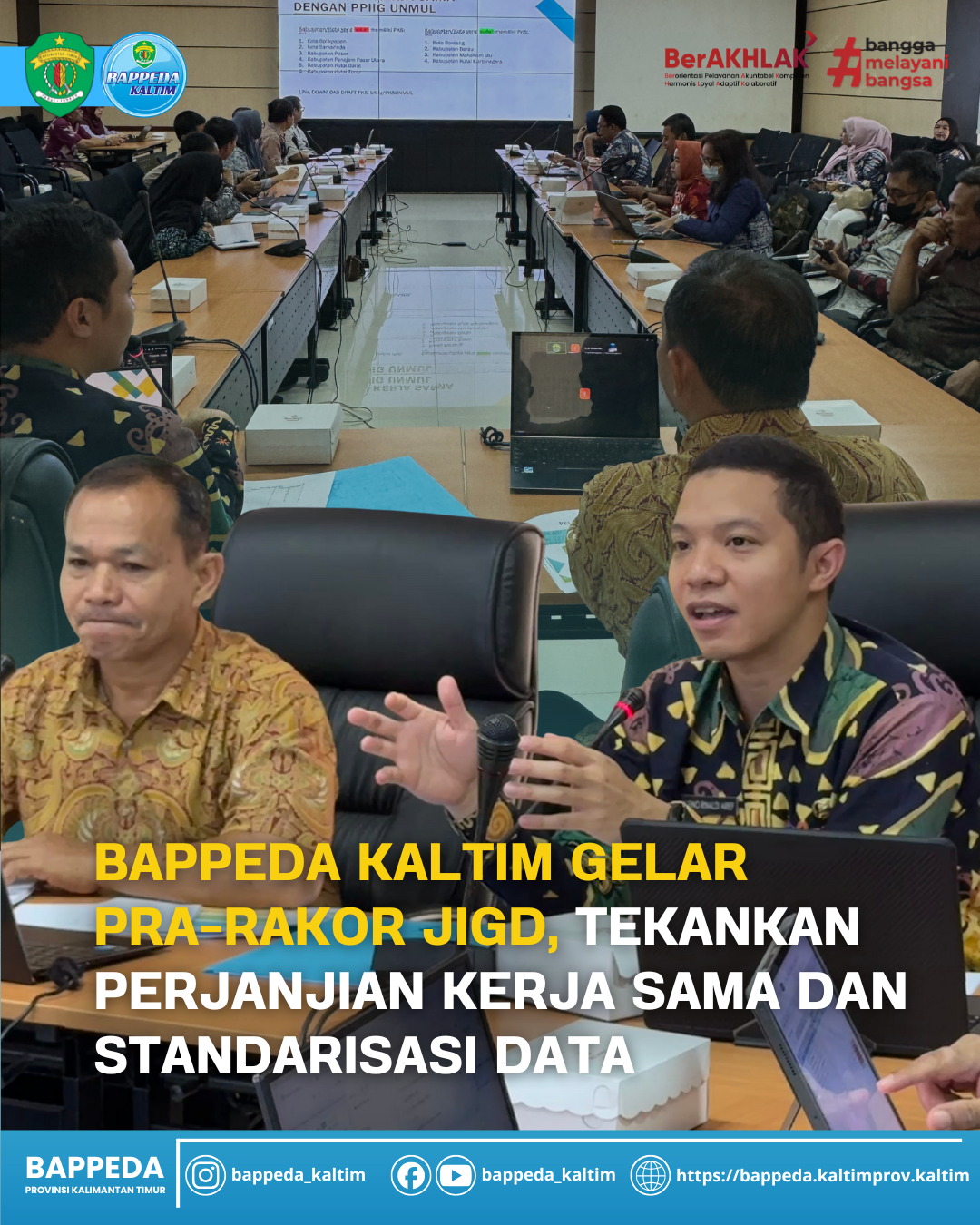
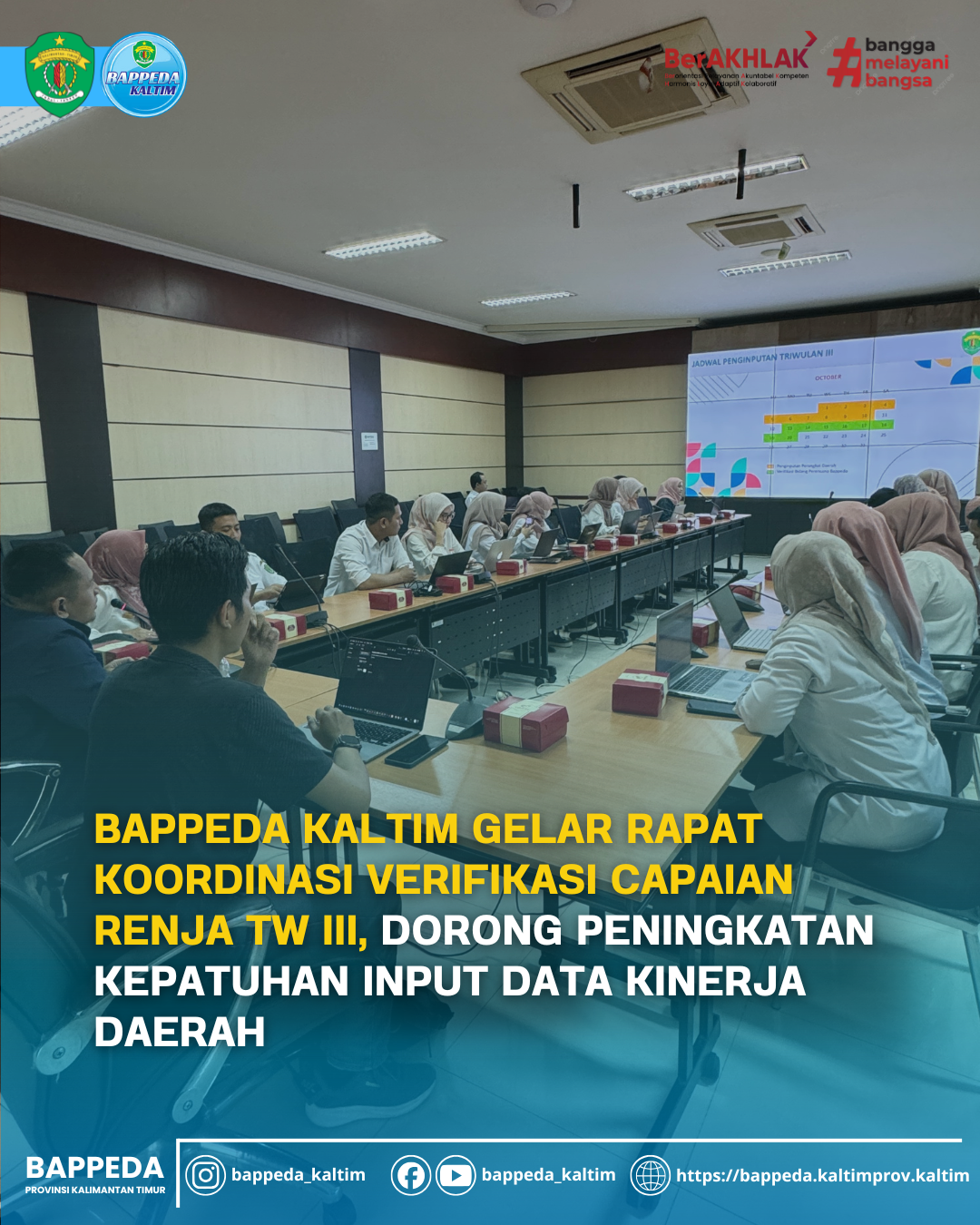
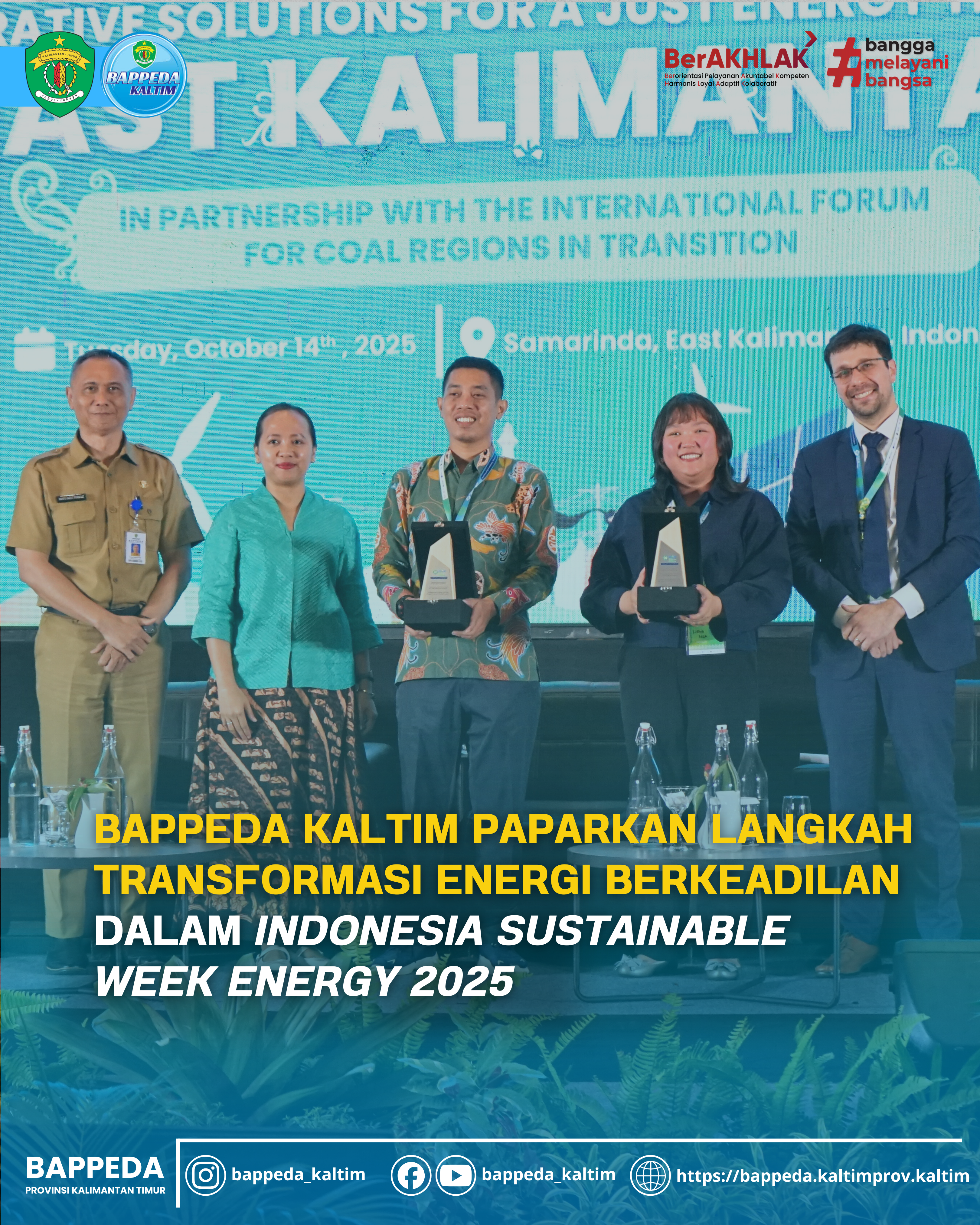
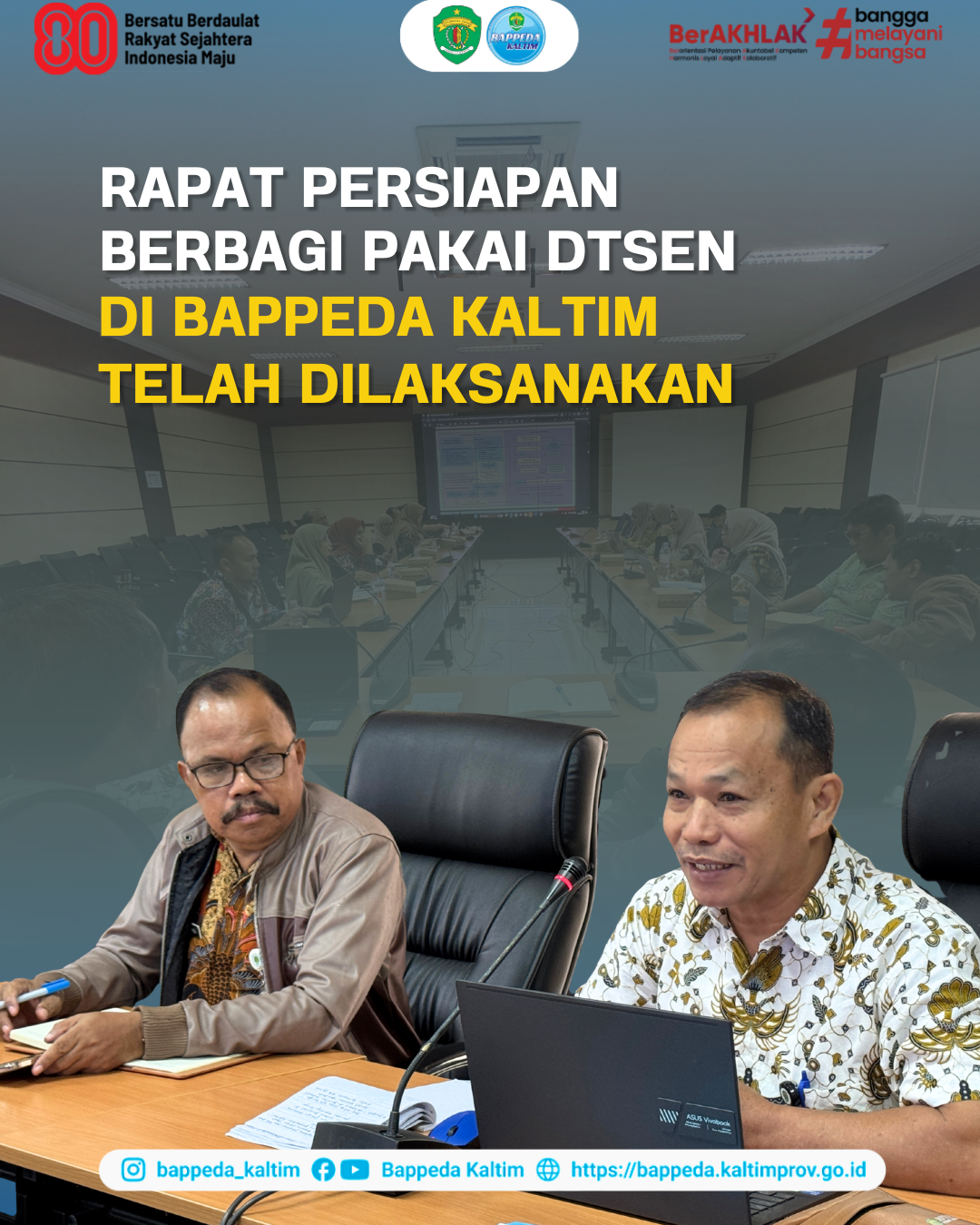

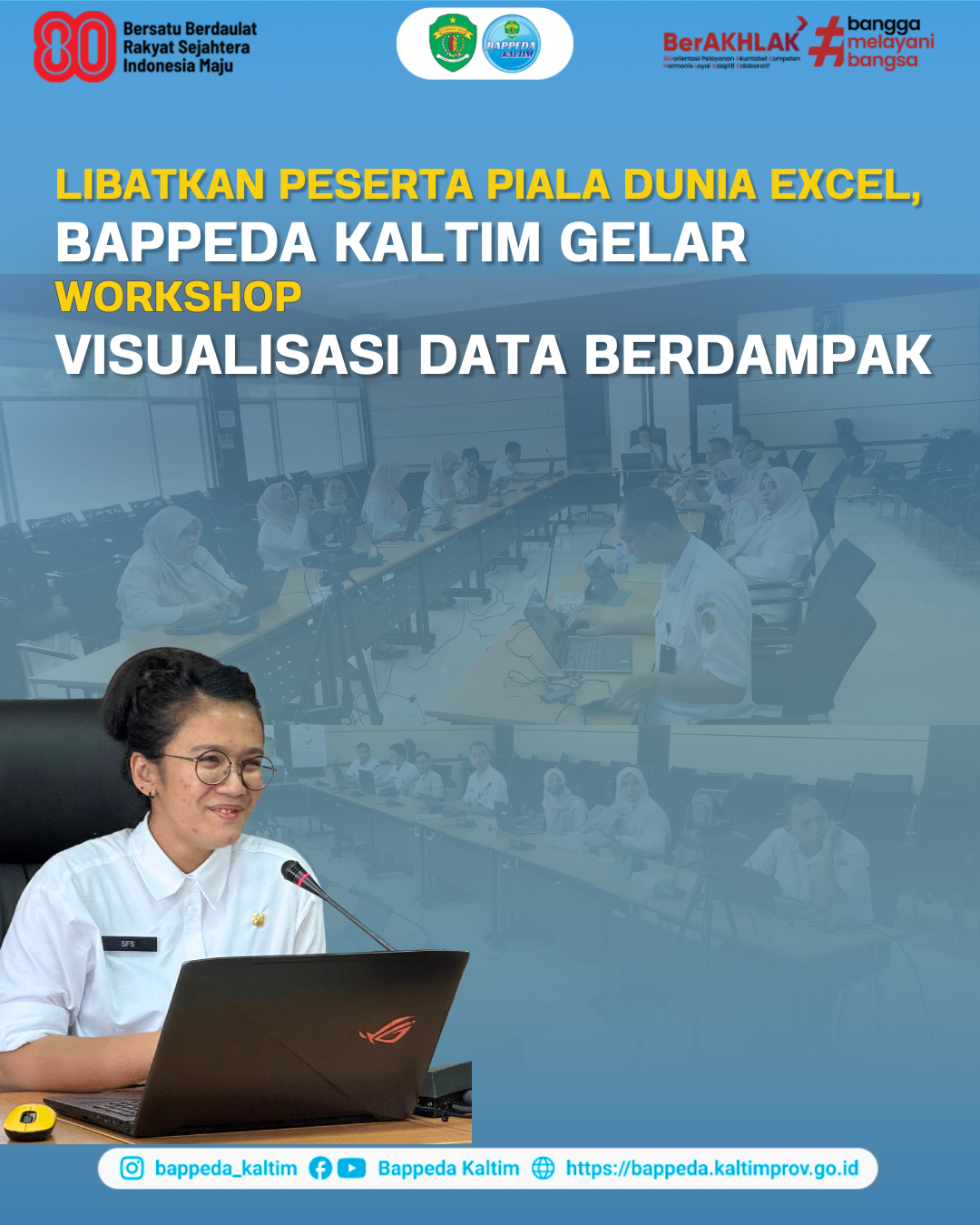

 Long Term Development (RPJPD) 2005-2025, has targets in each period. In 2013, as the end of the second period of the RPJMD (2009-2013), three important things were achieved, including:
Long Term Development (RPJPD) 2005-2025, has targets in each period. In 2013, as the end of the second period of the RPJMD (2009-2013), three important things were achieved, including: